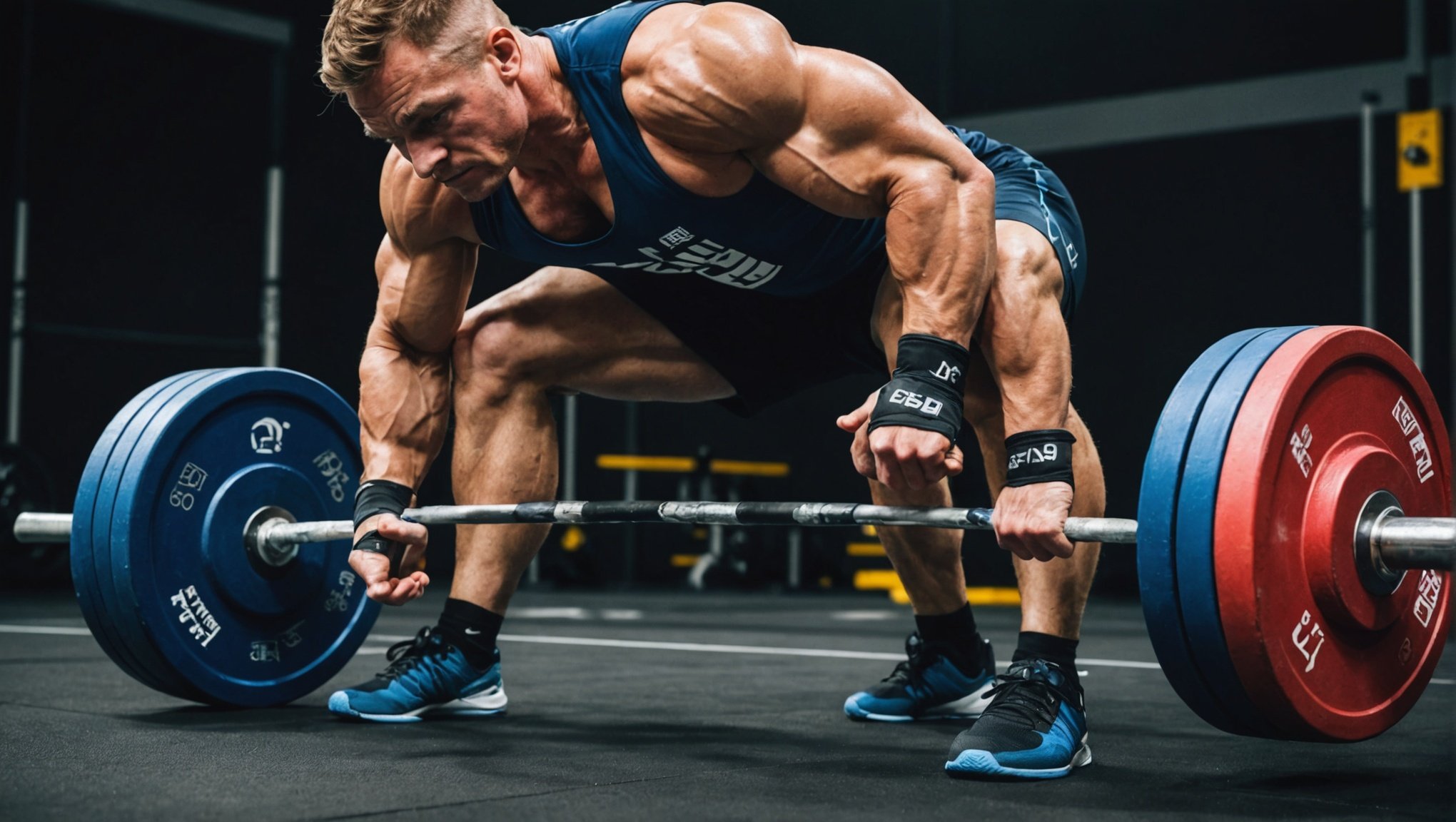As we consider the physical demands of competitive sports, it’s easy to overlook the importance of proprioceptive exercises. Designed to enhance the body’s innate sense of position, movement, and balance, these exercises can be integral elements of an athlete’s training regimen. However, the question arises: can such exercises be effective in preventing ankle injuries in weightlifters, a group of athletes often overlooked in this context? The following sections will delve into this topic, discussing the role of proprioceptive exercises in sports training, the connection between these exercises and injury prevention, and finally, the specific benefits weightlifters can reap from this type of training.
The Role of Proprioceptive Exercises in Sports Training
Proprioceptive exercises are increasingly recognized as a crucial part of sports training. These exercises are designed to enhance an athlete’s proprioception, the body’s sense of position and movement. This enhanced awareness can improve athletic performance and reduce the risk of injury.
Also read : What are the detailed effects of high-intensity interval training on muscle fiber composition?
The concept of proprioception is complex, but it essentially refers to the body’s sense of its position in space. This is crucial for balance and stability, especially during dynamic movements typical of sports activities. A study cited on Pubmed explains that proprioception is "essential for the control of muscle tone and joint stability". Therefore, any training program catering to athletes must incorporate exercises that focus on this critical aspect of physical fitness.
Proprioceptive Exercises and Injury Prevention
Injury prevention is a key focus of any sports training program. This becomes even more critical for strength athletes such as weightlifters, whose training intensity can expose them to a higher risk of injuries. Proprioceptive exercises are particularly beneficial in this context as they help to strengthen the muscles and improve balance, two factors that can significantly reduce the likelihood of injuries.
In parallel : How does the integration of mindfulness meditation impact concentration during workouts?
Ankle injuries are prevalent among weightlifters due to the heavy loads they lift and the technical nature of their exercises. A study on Pubmed shows that proprioceptive training can reduce the incidence of ankle sprains in athletes. By enhancing the body’s sense of balance and stability, these exercises can protect against the sudden movements that often lead to ankle injuries.
Tailoring Proprioceptive Exercises for Weightlifters
For weightlifters, integrating proprioceptive exercises into their training regimen can offer a multitude of benefits. However, these exercises need to be tailored to their specific needs. Generic exercises may not target the muscle groups most at risk during weightlifting, such as the ankles.
Weightlifters often perform exercises that require a high level of balance and stability. Ankle sprains are a common ailment in this sport, often resulting from a loss of balance during a lift. Tailored proprioceptive exercises can enhance the stability of the ankle joint, reducing the risk of such injuries.
The weightlifting community has begun to recognize the importance of such exercises. As per a report on Pubmed, several top-level weightlifters have incorporated proprioceptive training into their routines to prevent injuries and improve their performance. These exercises are typically performed on an unstable surface, such as a balance board, to challenge the body’s sense of stability and strength.
Long-Term Benefits of Proprioceptive Training for Weightlifters
Incorporating tailored proprioceptive exercises into a weightlifter’s training program can offer long-term benefits. Aside from the immediate effect of reducing injury risk, these exercises can also enhance athletic performance.
Improved balance and stability can lead to more efficient lifts, allowing athletes to handle heavier weights. This can result in significant performance enhancements over time. Moreover, a reduced risk of injury means fewer interruptions to training, allowing for consistent progress.
Despite the undoubted benefits of proprioceptive exercises, they are often overlooked in the typical weightlifter’s training regimen. As more research surfaces about their effectiveness, particularly in preventing ankle injuries, it’s likely that these exercises will become a standard part of training for weightlifters and other strength athletes.
By integrating proprioceptive exercises into their training, weightlifters can reap the benefits of enhanced balance and stability, improved performance, and a reduced risk of injury. It’s a small investment of time and effort that can yield significant dividends in the long run. Remember, a well-rounded athlete is not just about brute strength; balance, stability, and injury prevention are just as crucial to long-term success.
The Importance of Proprioceptive Training in Injury Prevention
The significance of proprioceptive training in injury prevention has been recognized and emphasized in various studies available on PubMed and Google Scholar. These exercises are designed to augment an athlete’s awareness of their body’s position and movement, contributing significantly to improved balance and stability. With improved balance and stability, the risk of injury, particularly ankle sprains, can be reduced.
According to a systematic review in sports medicine, an athlete’s awareness of their body position, or proprioception, is vital for muscle strength and joint stability. By enhancing this sense through specific exercises, the risk of injuries like ankle sprains, knee pain, shoulder pain, and rotator cuff injuries can be significantly decreased.
Proprioceptive training also plays a role in pain management. It can help athletes cope better with discomfort during their strength training regimens, leading to improved athletic performance and lower limb strength.
A free article on PMC indicates that proprioceptive exercises can reduce the incidence of ankle injuries, a common issue among weightlifters. The heavy loads that weightlifters handle and the precise nature of their movements make the ankles particularly susceptible. By strengthening the muscles around the ankle and improving balance, proprioceptive exercises can protect against sudden movements that often result in injuries.
Integrating Proprioceptive Training in Weightlifters’ Regimen: Conclusions and Recommendations
Through a careful review of the data available in sports medicine literature, it’s evident that proprioceptive training holds significant potential for injury prevention, particularly among weightlifters. The exercises, when customized to the needs of the weightlifters, can provide both immediate and long-term benefits.
Primarily, the immediate benefit lies in reduced injury risk. An article on PubMed emphasized the effectiveness of proprioceptive exercises in reducing the incidence of ankle sprains among athletes. For weightlifters, this is of particular importance as sprains can lead to significant downtime, negatively impacting their training and performance.
Long-term benefits of including proprioceptive training in weightlifters’ regimens include improvements in balance and stability. Over time, these enhancements can lead to heavier lifts and significant improvements in performance.
To ensure that the exercises are effective and target the most vulnerable muscle groups, customization is key. The practice of proprioceptive training needs to be adjusted according to the athlete’s specific needs. Such tailored exercises can better enhance the stability of at-risk areas, such as the ankles, and decrease the risk of injury.
In conclusion, the integration of proprioceptive training into weightlifters’ regular strength training regimen is a strategy worth considering. Not only has it been proven to reduce injury risk, but it also improves overall physical performance. Although this form of training has been overlooked in the past, it is time for a shift in perspective. After all, a successful athlete is not just about brute strength – maintaining balance, ensuring stability, and preventing injury are equally crucial for long-term success. Proprioceptive training, in this context, is not just beneficial – it is indispensable.













